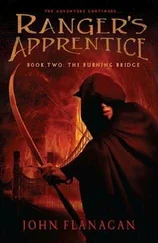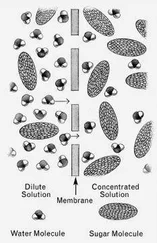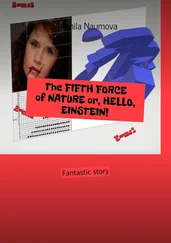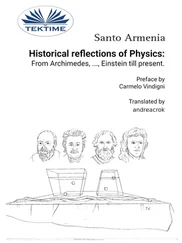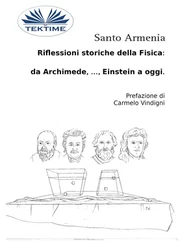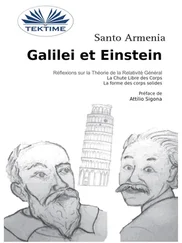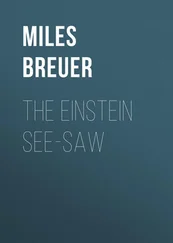Einstein’s Bridge
by
John Cramer
To Albert Einstein and Nathan Rosen, who discovered the Bridge within the mathematics of general relativity, and to Charles Lutwidge Dodgson, who organized the first Snark hunt.
THIS NOVEL WAS A LONG TIME IN THE MAKING. IT WAS originally intended to be a hard science fiction novel, set in Waxahachie, Texas, and about people doing high-energy physics, that would take advantage of the publicity and interest surrounding the construction of the world’s largest particle accelerator, the Superconducting Super Collider. It was about 80 percent complete when the U.S. Congress cancelled the project in 1993. I was unable to even look at the unfinished manuscript for about a year after that event. Ultimately, it was rewritten from scratch. Needless to say, the present form of this novel was shaped as much by the cancellation as by the original project.
I am deeply indebted to many people for their help and advice during the approximately five-year period that this work was in progress. I particularly want to thank my wife Pauline for all her help and encouragement.
I’d like to thank the following people (listed alphabetically) for valuable scientific and technical discussions contributing to this novel: Gordon Baker, Greg Bear, Gregory Benford, David Clements, Robert Forward, Anthony Garrett, Geoff Landis, Henry Lubatti, Vonda Mclntyre, Mike Morris, Grazyna Odyniec, Ken Young, and Matt Visser.
I’d like to thank the following people (listed alphabetically) for taking the time to talk with Pauline and me during our visit to Waxahachie: Wendell Bigham, Wendell Chen, Helen Edwards, Les Faciane, Gil Gilchrise, Ronnie and Sylvia Hastings, Richard Holleyfield, Buck Jordan, Jim Owens, Stephen and Claire Ann Pierce, Ken Reed, Wil Reuter, and Barnie Taylor.
I would like to thank the following people (listed alphabetically) for reading various versions of the manuscript and making valuable suggestions: Amanda Baker, Jennifer Brehl, Ethan Bradford, David Clements, Karen Cramer, Kathryn Cramer, Pauline Cramer, John Douglas, Geoff Harries, Mark Howe, Mark Hurst, Henry Lubatti, Bede Pittenger, Susan Protter, Karen Savage, Janet Seyboth, and Richard Seymour.
May 23, 2004
January 29, 1987
Throw deep!
— President Ronald Reagan, when asked his thoughts on initiating the superconducting super collider project
You’re going to make a lot of physicists ecstatic, Mr. President.
— Director William Miller, Office of Management and Budget
That’s probably fair, because I made two physics teachers in high school very miserable.
—President Ronald Reagan
May 11, 1987
It would be wrong to say I’m against the SSC. It’s great scientifically. In fact, it’s mind-blowing. The problem is that over the past five years there has been a slow starvation of what I call “small science.” I say first get small science in good shape and then by all means proceed with the SSC.
— President-elect James Krumhansl, American Physical Society
THE SKY-FILLING DISK OF THE DIM YELLOW-ORANGE Sun was just rising on the east coast of the northern continent when the new universe was discovered. The Hive Mind’s latest breed of extradimensional Lookers signaled the find, triggering rapid transmissions that rose to a screaming pitch on all frequency bands as communications from separated components stitched across the planet. The Hive Mind gave orders. Resources must be refined, machines must be constructed, energy banks must be recharged, a new strategy of conquest must be put into place. Workers all over the planet scurried to fulfill their tasks, refining materials, producing parts, assembling machines, simulating alternate courses of action, making ready for the next great attempt at Hive colonization.
The Hive Mind was immortal, and it was very old. A million years ago it had slowly come to awareness of its own existence as an ordered structure overlaying the disorder of its Hive. It had made the leap of self-insight, viewing the instinctual behavior and the stilted, almost random, actions of its components: Workers, Soldiers, Flyers, Queens, and Drones. The Hive Mind smoothed their neural programming, turning their narrow rote behaviors toward a more holistic purpose.
The other Hives were the principal threat to the Hive Mind. Most were much older, larger, and better established. The Old Hive dominated the ecology of the entire southern continent. The Sea Hive had developed Swimmers that extended its hegemony into the ocean, somehow communicating through water with sound instead of normal electromagnetic waves. The North Hive had developed Ice Workers that could work even below the freezing point of water and could make Nests and tunnels under the polar ice cap. But none of these proved to be a match for the Hive Mind’s new intelligence-directed assaults.
In a few brief millennia the Hive dominated the planet. It had killed off all of the other Hives, along with most of the planet’s other life-forms. By exercising choice and vision in its multiplicity of decisions, the Hive Mind found by chance the process of selective breeding. Soon the few surviving non-Hive species of the planet had been modified into domesticated resource gatherers and food processors. Applying selective breeding to its own Queens and Drones, it soon developed fast long-range communication between its components.
The resulting increase in the speed and number of the Hive Mind’s constituent parts greatly increased its awareness and volume of sensory inputs. This endowed it with a new attribute: curiosity. Systematically it began to explore its world. It encountered fire and found uses for it. It began to savor the subtle differences in the native materials of the planet and investigated how they behaved when heated with fire. It discovered refining and smelting, and it learned to use metals and ceramics as structural materials and tools.
Then it discovered the stars. By selective breeding it developed special units, Lookers, with eyes that had greatly increased optical resolution and broadened frequency sensitivity. The Hive Mind discovered that by combining simultaneous inputs of many Lookers, it could gain more information about the mysterious bright objects in the sky.
It began to notice certain regularities in the motions of some of the sky objects. From these regularities the Hive Mind’s first theories and mathematics emerged, as it deduced the existence of a solar system with planets and a force of gravity that held them in regular orbits.
Its emerging science of astronomy served as a model for other discoveries that followed. Slowly, as the millennia passed, the secrets of chemistry and biology and physics were revealed, as the Hive channeled Workers to perform measurements and experiments that would verify or falsify the theories that the Hive Mind had devised. It developed Workers so small that they were only complex molecules and used these to experiment and explore. It began to understand the universe in which it lived.
The chain of discoveries ultimately led the Hive Mind to begin a new program, high-energy physics. Its tireless Workers constructed a large electromechanical structure that stretched in a long straight line spanning a considerable stretch of flat plains on the southern continent. The machine accelerated electrons from the north and from the south and brought them into head-on collisions at the center of the machine, while millions of specially designed Lookers observed and communicated the results of the collisions before succumbing to radiation exposure and dying, to be replaced by fresh units.
As these investigations were progressing, a remarkable thing happened. A particularly violent collision event opened a communication channel to another universe. The Hive Mind began to exchange signals with another species through the channel. It was a strange and stressful experience, communicating with an Otherness, a non-Self, a non-Hive. It had endured this stress for a time, gaining valuable information and concepts. Then, when the Otherness had seemed to lose some interest in communication, it had used its technology to kill the Otherness.
Читать дальше



